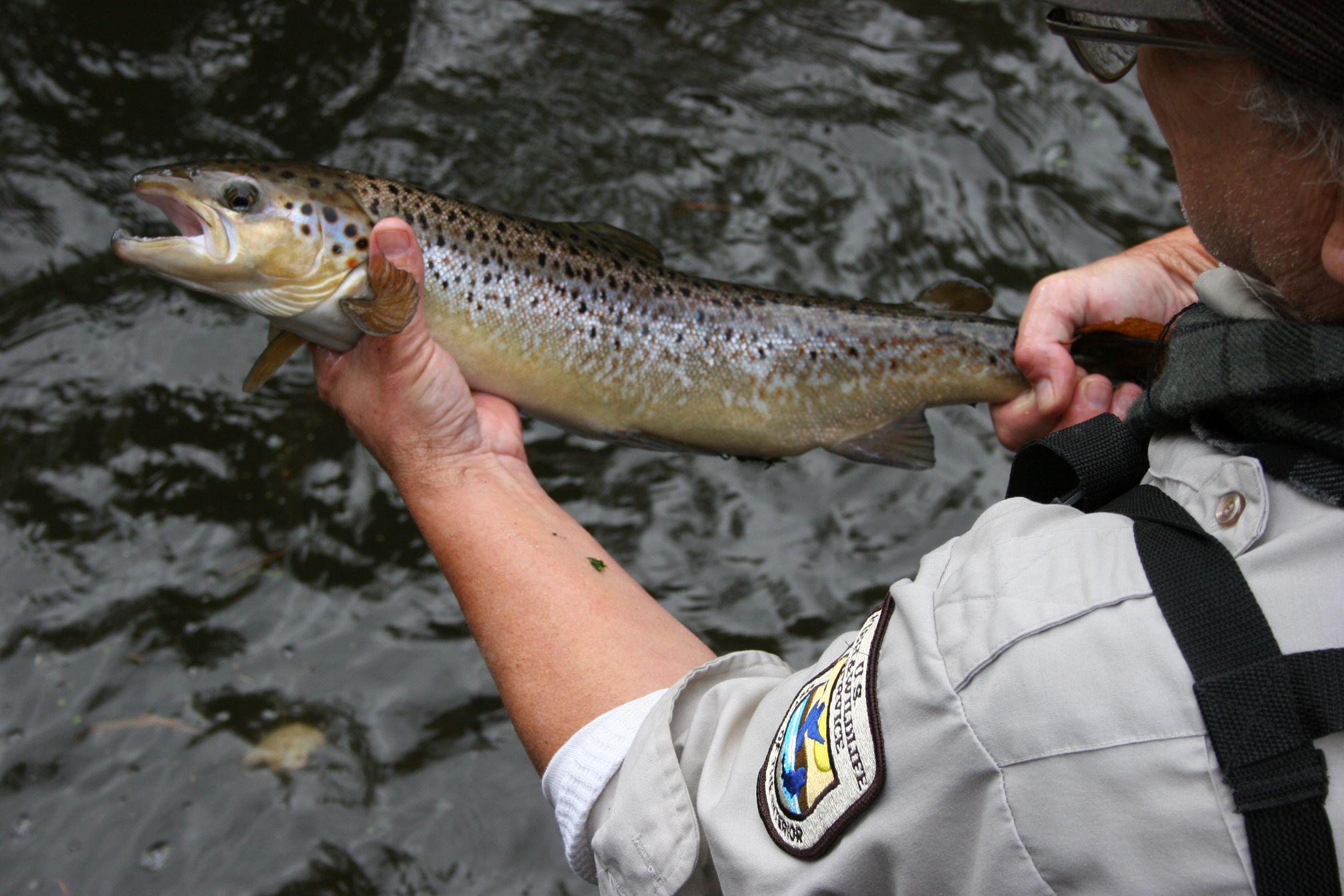
A high-profile salmon escape led to a ban on salmon farms in Washington earlier this year. But just across the border, scientists say salmon farms in British Columbia expose migrating fish from Puget Sound to potential maladies like parasites, bacteria and dangerous viruses. They say simply getting rid of salmon farms in Washington does not put the potential impacts to rest.

On August 19, 2017, an open-water net pen full of Atlantic salmon near Cypress Island collapsed, releasing over 250,000 non-native fish into northern Puget Sound. Fifty-seven thousand of the escapees were caught during an unprecedented effort on the part of local fishers, but between 186,000 and 206,000 remain unaccounted for, save for one that was recently caught 40 miles up the Skagit River.
With the net pen’s failure, and amid a series of evolving explanations for that failure from its operator, Canadian-based Cooke Aquaculture, the local fishing community worried. Would escaped Atlantic salmon establish and further imperil Puget Sound’s already imperiled wild salmon runs? And why were people farming a potentially invasive species here in the first place?
The state of Washington did not always fear and loathe Atlantic salmon this much. Indeed, state biologists had tried several times over the decades — first in the 1950's and as recently as the 1980's — to establish breeding populations in state waters. But public antipathy grew and grew until, in late March of 2018, Governor Jay Inslee signed a bill banning Atlantic salmon net-pen farming in state waters. "This bill will phase out non-native marine net pens in Puget Sound,” he said at the signing ceremony. “These present a risk to our wild salmon runs that we cannot tolerate.”
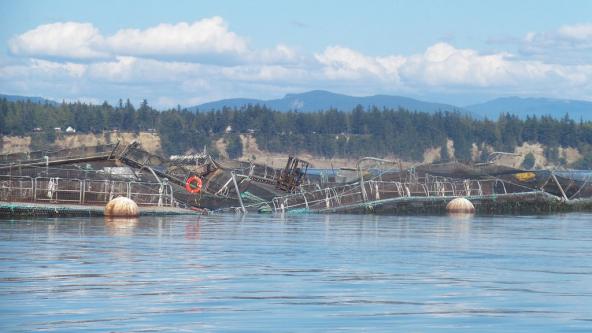
Issue resolved, right? Well, perhaps not quite. For while the potential for Atlantic salmon to establish in Puget Sound was much discussed, there is another, lurking issue that hasn’t received as much attention in the U.S., but one that could be much trickier to solve: the transmission of parasites and disease between farmed salmon just across the border in Canada and local wild stocks.
As a family, Pacific salmon are not known for their healthy respect of borders. The first border they most famously flout is the one between freshwater and salt, when they transition between the creeks and streams of their hatching to the Pacific Ocean, where they spend most of the rest of their adult lives. But another to which they pay little attention, although one that figures significantly in their management, is the border between the United States and Canada, and more precisely the little crooked line that runs through the marine waters of the Salish Sea between Washington, Vancouver Island, and mainland British Columbia.
Conference presentations
It is a sunny afternoon in early April, not that anyone here would know, sitting as they are in a windowless conference room at the Washington State Convention Center in Seattle. They are here for the 2018 Salish Sea Ecosystem Conference, and this session in particular: “The Impacts of Open Net Pen Farming on Wild Salmon.” The session is focused on net pen aquaculture in Canadian waters, where the practice is common, but it is clear that possible impacts on wild salmon may not be limited to that geography, if they ever were.
Salmon farming in British Columbia began with a few small operations in the 1970s, and grew in size and scope until, by the 1990s, a few large companies had set up big net pens throughout the Strait of Georgia. The industry now has 130 farms throughout the Campbell River, Port Hardy and Tofino areas. Analysts say salmon aquaculture supports thousands of jobs and generates more than $500 million in revenue per year, according to a recent estimate by the Department of Fisheries and Oceans Canada. Atlantic salmon are now British Columbia’s largest agricultural export, with the species becoming what one journalist called “the Herefords of fish.”
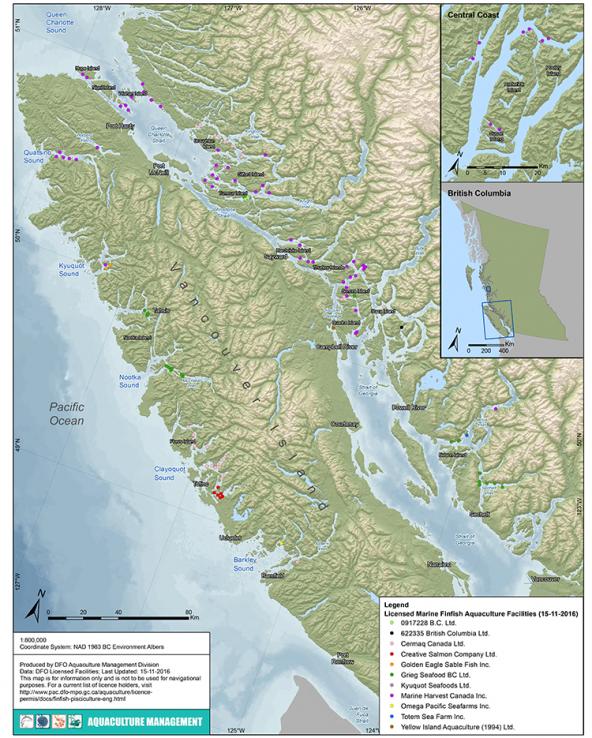
But almost since the first days, there has been tension between industry advocates and wild salmon advocates over the potentially harmful effects of net pens on wild salmon populations. Over the years, net pens have been the subject of numerous complaints, from their use of antibiotics and pesticides that contaminate the water, to the fish waste that farming operations produces, to the folly of harvesting wild forage fish to feed farmed fish.
One of the most enduring problems, though, has been infestations of sea lice in the farms, and their spread to wild fish populations. Sea lice are parasitic copepods that attach to salmon and feed on their tissues. This not only stresses the fish, but also makes them vulnerable to secondary bacterial or viral infections, and can even kill them. The particular sea louse that infects salmon in the Salish sea, Lepeophtheirus salmonis, is endemic to the region, but only rarely plagued juvenile wild salmon prior to the arrival of salmon farms.
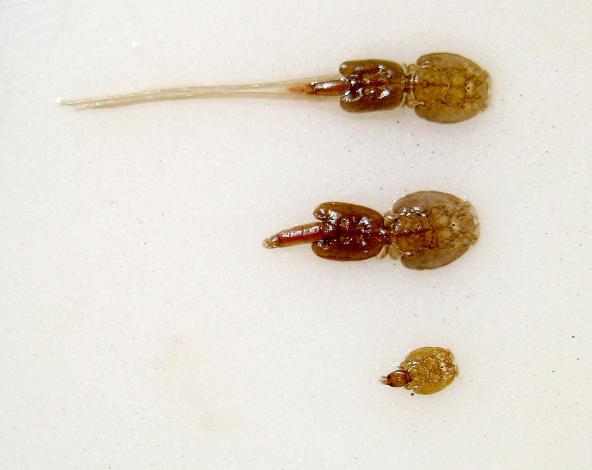
Now, in some places, infestation rates from L. salmonis are alarmingly high. Scientists blame sea lice for sharp declines in pink salmon populations throughout the Broughton Archipelago. In Clayoquot Sound, too, a recent study found that juvenile chum salmon escapement was declining despite the habitat otherwise being of such optimal quality that it is part of a UNESCO Biosphere Reserve. But when biologists took a closer look, they found that the more salmon farms the finger-sized smolts had to pass on the way from their natal watersheds to the Sound, the greater their sea lice infestation risk. The salmon farms, often as many as six per inlet, acted as reservoirs for the parasites. In some instances, by the time a group of juvenile chum reached Clayoquot Sound, 20% on average, and as many as 80% at times, were infested with sea lice; and having as few as two sea lice attached could be fatal.
“The farms have not gotten sea lice under control anywhere,” says Alexandra Morton, an independent biologist and activist who has worked out of Echo Bay in British Columbia for the past 26 years. “They’ve been trying for eighteen years, and now there’s an 80% infection rate. It continues to be a huge problem.” The Canadian government, too, recognizes that sea lice is a big issue for salmon farms, pointing to a need for more scientific studies to improve sea lice management. But the problem may go much deeper.
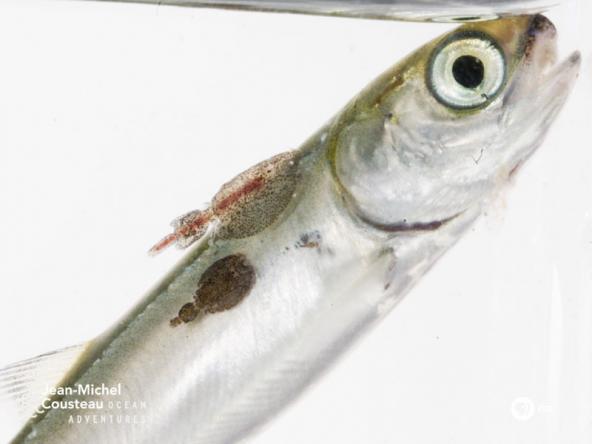
Disease doesn't stop at the border
Recently, a team from the University of Toronto has started to take a step back from sea lice, to look at infectious microorganisms more broadly throughout BC waters—everything from bacteria to viruses to eukaryotic pathogens. The question is, if salmon farms act as reservoirs for sea lice, and lead to a consequent spike in infestation rates, could they not also act as reservoirs for other pathogens?
This has been a fear for wild salmon biologists for some time. As many as 70% of farmed Atlantic salmon are infected with a type of reovirus. The virus does not appear to inflict dire harm on the Atlantic salmon, but a recent study showed that a strain of the reovirus also infects farmed Chinook salmon, and it had different, more deleterious consequences. If it can infect farmed Chinook, could it not also spread to wild Chinook?
It is here that some say Washington's salmon may be most vulnerable. “The problem is that you’re putting animals effectively in a feed lot situation and not allowing predators to interact with sick fish,” says Morton. “So fish can survive for a long time in an infectious state, allowing the infection to possibly spread far and wide.”
Where sea lice are visible, an infection often is not. To find pathogens is to wade into their vagaries. “One of the big problems is just to track the spread of a disease,” says Martin Krkošek, a professor at the University of Toronto who studied sea lice infestations due to farmed salmon for over a decade before turning his attention to disease. “If a salmon acquires infections in a location, by the time the infection translates to detectable pathology, which can take weeks or months or even years, that salmon is long gone,” he says. Conversely, even if scientists are actually able to pick up signals of a pathogen, it can be really hard to localize where the infection was acquired.
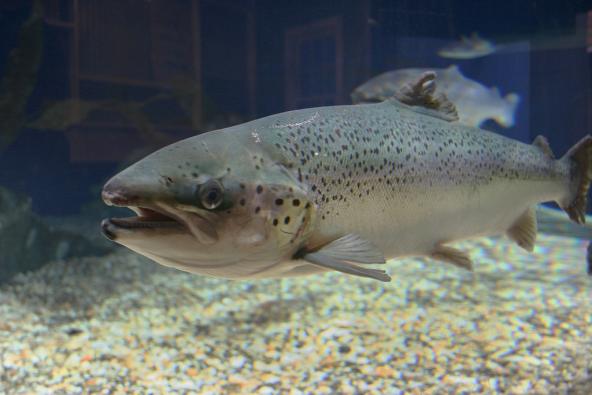
A partial answer to this problem, then, is to simply survey waters around salmon farms and waters without fish farms and see what pathogens might lurk in the water. “We want to know the risk of exposure, the risk of acquiring infection as a consequence of activity and management practices of fish farms,” Krkošek says. “Now that we can pull some of this information straight out of seawater, we can resolve the risk infection and tie it to the presence or absence of fish farms and other environmental variables. It has opened a lot of new doors to look at these questions.”
Dylan Shea, one of Krkošek’s graduate students, recently took ten-liter water samples from a number of sites and tested them for 30 viral, bacterial, eukaryotic pathogens known to be disease-causing agents for salmon, and a worrisome picture emerged: infection risk for wild salmon was several times higher in habitats with fish farms than habitats without them.
So how might a salmon farm in British Columbia affect a Washington salmon? “A lot depends on juvenile migration routes,” Krkošek says. “Many Puget Sound salmon move up along the inside of Vancouver Island, and this puts them at same risk as fish from the Fraser River, and other mainland stocks in British Columbia.”
What this means is that simply getting rid of salmon farms in Washington does not mean Puget Sound salmon are out of the woods, so to speak. “Washington fish pass through BC waters,” Morton says. Ban the fish farms all you like in Puget Sound—it may not matter. “Our problem,” she says, “is still your problem.”

